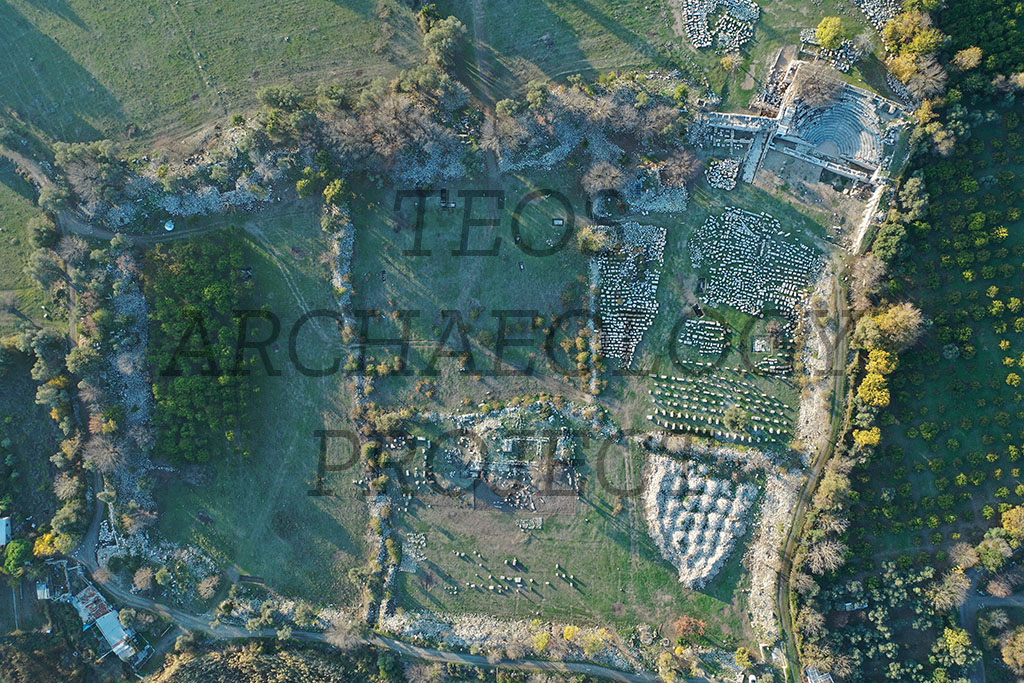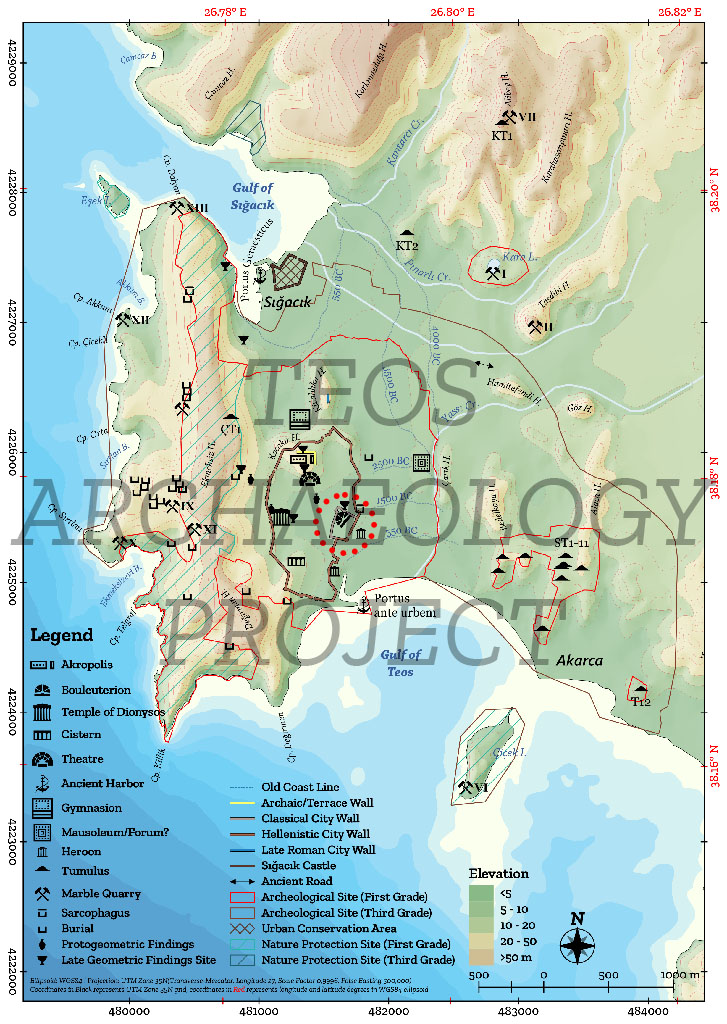
Aerial Photograph of the late Roman Fortification line (Kadıoğlu, 2021, 172, Figure 62)
Very little is known about the agora of Teos, which was at the centre of the social and political life of the city.
Visiting Teos in late 1836, W. J. Hamilton stated that the heap of gigantic column drums, architrave fragments, frieze blocks with triglyph and metopes, and cornices with dentils that could not be attributed to the Temple of Dionysus instead belonged to a Doric structure. He also mentioned the remains of a small temple set in the middle of an open space that could be a forum or agora. The small temple in the centre of the area now called the agora, as well as this heap of Doric architectural elements, was probably the city’s agora. Ch. Texier and R. P. Pullan’s first discovery during their research in Teos was a Corinthian temple in the middle of a corn field, most likely identifiable as the small temple (Temple of Rome and Augustus since 2021) located in the agora.
The area of the agora did not change significantly since the French researchers visited it nearly 100 years ago. The heart-shaped Doric corner column can still be seen in situ in the tangerine orchard 150 m south of the bouleuterion. This ‘heart-shaped’ column must belong to the junction corner of the west and south porticos of the agora, but apart from the corner column, nothing remains of these porticos. The existing walls visible to the west and south of the corner column do not belong to the rear walls of the porticos, but to the Late Roman Fortification Wall.

Archaeological map of Teos and its surroundings (Kadıoğlu, 2021, 25, Map 4)
